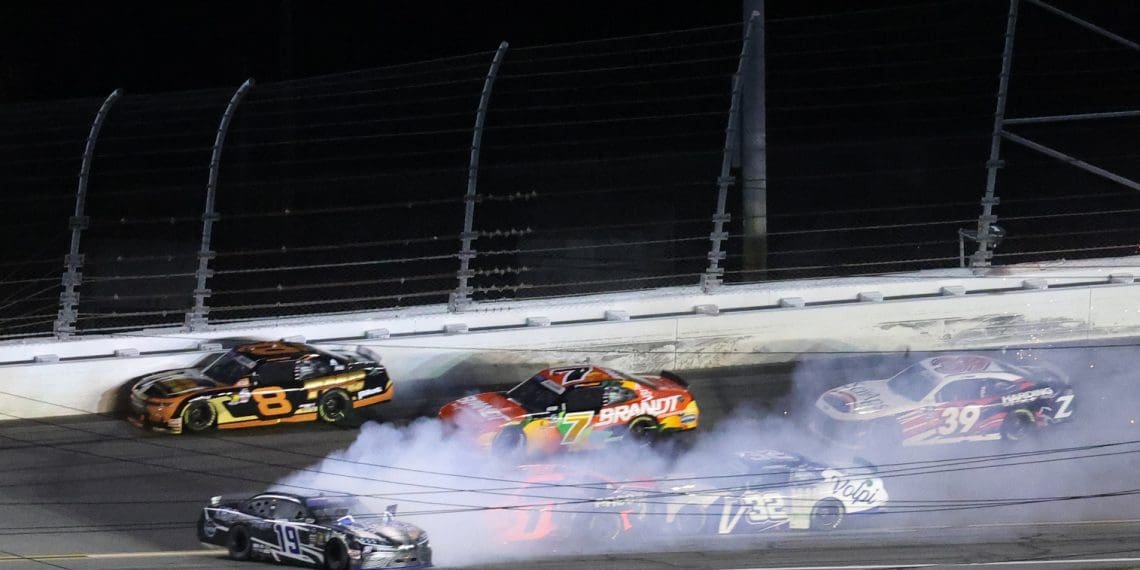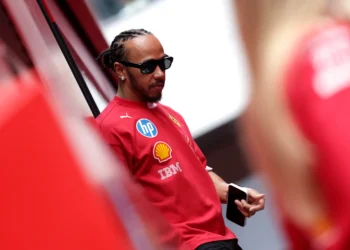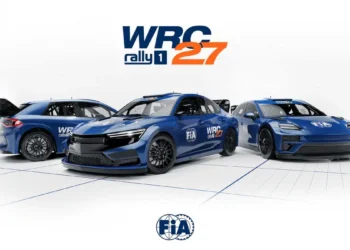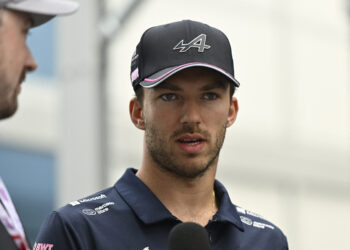In the world of NASCAR, split-second decisions can change the outcome of a race, especially when safety is on the line. This past Daytona 500 weekend, NASCAR made several high-stakes calls that stirred debate among fans and analysts alike. Why did the caution come out during the second qualifying duel, but not the Daytona 500? NASCAR Managing Director of Competition Operations, Jusan Hamilton, offered insight into these controversial calls, revealing the delicate balance of safety, timing, and race strategy.
A Tale of Two Cautions
The differences between the caution calls during the two events boiled down to one main factor: how quickly safety teams could respond. In the second qualifying duel, a multi-car crash occurred near the start/finish line in the tri-oval. With the wrecks happening in a high-speed section of the track, the decision to throw the caution was an easy one, according to Hamilton. The caution allowed NASCAR to swiftly dispatch emergency services to the scene, preventing further chaos on the track.
Hamilton explained, “In our past reviews, we’ve seen a lot of big hits in that area coming to the checkered flag… We’ve seen bad things happen in the past… so, with several of those heavy wall hits, the determination was to put the caution out.”
But the call wasn’t as simple on Sunday’s Daytona 500.
The Daytona 500: A Different Kind of Calculation
When the final multi-car wreck occurred on the backstretch of the Daytona 500, NASCAR faced a unique set of circumstances. Unlike the qualifying duels, where the field was tightly packed, the cars had already spread out following a restart. This gave NASCAR the critical time and space they needed to respond to the wreck while allowing the leaders to continue racing.
“Sunday’s wreck occurred after an overtime restart,” Hamilton noted. “Because of the field’s spread out position, there were no vehicles coming at race speed that could potentially collide with the safety teams being deployed.” This allowed the race to continue without a caution until the leaders, including eventual Daytona 500 winner William Byron, crossed the finish line. Only then did NASCAR throw the caution, allowing for a timely response to the wreck.
Safety Protocols at the Forefront
Hamilton emphasized that safety is NASCAR’s primary concern, which is why the decision-making process often goes beyond the simple optics of when the caution flag flies on TV. With real-time tracking of each vehicle’s position, NASCAR’s race directors have an advanced system that shows where every car is on the track during the event. This technology ensures that emergency vehicles are not sent out into dangerous traffic conditions, and it allows race officials to make informed decisions that protect both drivers and track personnel.
“There’s a lot of nuance to when we throw the caution,” Hamilton said. “If a car leaves the ground or there’s an impending danger, we’re immediately on it. But we have to assess every angle, from track conditions to vehicle positioning.”
This was particularly true during the Craftsman Truck Series and the Daytona 500, where safety vehicles couldn’t be deployed until NASCAR knew that no additional vehicles were racing toward the danger zone. In contrast, when the Truck Series saw several spread-out vehicles, the decision to delay a caution was made to prevent chaos as emergency crews worked on-site.
The Balancing Act Between Green Flag and Safety
Hamilton made it clear that NASCAR’s goal is to have green flag finishes, but the priority will always be the drivers’ safety. NASCAR strives to strike a delicate balance between maintaining the integrity of the race and ensuring that racecars and safety teams operate in a safe environment. This philosophy drives the decisions made in real-time, especially in high-stakes situations like the Daytona 500.
“Our race directors have to be in sync with emergency services coordinators. If the situation demands an immediate response—such as cars barreling toward others at high speed or a car airborne—that’s when we throw the caution,” Hamilton explained.
The complexity of these decisions goes far beyond what fans see on their screens. While the broadcast offers a limited view, Hamilton assures that all decisions are rooted in NASCAR’s experience, technology, and commitment to ensuring a fair and safe race.
Conclusion: Trusting NASCAR’s Judgment
NASCAR’s handling of caution flags and its focus on safety remain paramount, as evidenced by the Daytona 500 weekend’s events. Despite the heated discussions around the timing of these calls, Hamilton’s insights underscore the importance of careful consideration and real-time response to each unique situation on the track.
As NASCAR moves forward, fans will continue to debate these decisions, but one thing remains clear: the safety of drivers, teams, and crew members is at the heart of every decision NASCAR makes.










